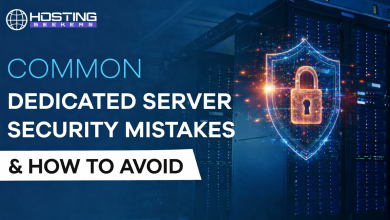
In today’s rapidly evolving digital landscape, cybersecurity stands as one of the most critical sectors. Organizations face increasingly sophisticated cyber threats, from data breaches to ransomware attacks. As a result, the demand for skilled cybersecurity professionals has surged. However, a significant skills gap persists, leaving many organizations vulnerable. This article delves into the emerging trends shaping the cybersecurity workforce and offers practical strategies for closing the skills gap and building a resilient team ready to tackle modern cyber challenges.
1. The Growing Demand for Cybersecurity Professionals
The digital transformation of businesses and the escalating frequency of cyberattacks have fueled a dramatic rise in demand for cybersecurity professionals. Industries across the board, from finance to healthcare, require specialists who can secure networks, protect data, and mitigate risks. Despite this demand, a global shortage of skilled cybersecurity workers remains. According to the (ISC)² 2023 Cybersecurity Workforce Study, the industry needs over 3 million more professionals to meet current demands, underscoring the urgency of bridging this skills gap.
2. How Online Education Helps Fill the Skills Gap
The shortage of cybersecurity talent has led to a surge in demand for online education programs tailored to aspiring security professionals. An online MIS degree (Management Information Systems) offers one such pathway, providing comprehensive knowledge in cybersecurity principles, data management, and IT strategy. These programs enable working professionals to upskill or switch careers while maintaining their current roles. By providing flexible learning opportunities and specialized cybersecurity courses, online education helps bridge the gap by creating a new generation of qualified experts.
3. The Rise of Specializations in Cybersecurity
As cyber threats become more sophisticated, the cybersecurity field has expanded into specialized roles. Today, organizations require experts in areas like cloud security, ethical hacking, threat intelligence, and incident response. Specialization allows professionals to focus on niche areas, bringing deep expertise to their roles. For instance, a cloud security specialist ensures data integrity in cloud environments, while an ethical hacker identifies system vulnerabilities through penetration testing. Encouraging specialization can help organizations build a diverse, skilled workforce capable of handling complex security challenges.
4. Upskilling and Reskilling the Current Workforce
Given the dynamic nature of cyber threats, organizations can’t rely solely on new talent; they must also upskill and reskill their existing workforce. Upskilling involves enhancing employees’ current skills through advanced training, while reskilling focuses on training workers for entirely new roles. Providing regular training programs, certifications, and workshops can help professionals stay updated on the latest security practices. Companies can partner with educational institutions or offer in-house training to equip their teams with the necessary skills.
5. Emphasizing Soft Skills in Cybersecurity
Technical skills are crucial in cybersecurity, but soft skills shouldn’t be overlooked. Problem-solving, critical thinking, and effective communication are vital traits for security professionals. They need to analyze complex threats, develop strategic responses, and convey risks to non-technical stakeholders. Additionally, leadership skills can help managers build cohesive, resilient teams. By valuing soft skills alongside technical prowess, organizations can foster a well-rounded workforce capable of anticipating and responding to cyber threats efficiently.
6. Diversity and Inclusion in Cybersecurity
A diverse cybersecurity workforce brings varied perspectives and problem-solving approaches, leading to more innovative and effective solutions. However, the industry has traditionally struggled with diversity, particularly in gender and ethnic representation. Organizations must create inclusive hiring practices and support diverse talent through mentorship, scholarships, and career advancement opportunities. By promoting diversity and inclusion, companies can build stronger teams and gain a competitive edge in addressing a wider range of cybersecurity challenges.
7. The Role of Certifications in Building Credibility
Certifications play a significant role in validating cybersecurity expertise and building credibility. Industry-recognized credentials like Certified Information Systems Security Professional (CISSP), Certified Ethical Hacker (CEH), and CompTIA Security+ are often prerequisites for specialized roles. Pursuing certifications demonstrates a commitment to professional growth and keeps skills relevant. Employers should encourage certification among their staff by providing financial assistance or incorporating it into their training programs. This not only enhances skills but also boosts employee morale and career progression.
8. Building a Culture of Continuous Learning
Cybersecurity professionals must stay ahead of evolving threats through continuous learning. Organizations can foster a culture of learning by offering regular training, workshops, and opportunities for experimentation. Encourage employees to attend industry conferences, webinars, and hackathons, which provide valuable insights into emerging trends. Additionally, nurturing a collaborative environment where team members share knowledge and learn from each other can significantly enhance overall team competence.
9. Leveraging Artificial Intelligence and Automation
Artificial Intelligence (AI) and automation are transforming the cybersecurity landscape, enabling teams to identify threats faster and automate repetitive tasks. However, this shift requires professionals who understand both cybersecurity and AI. Upskilling the workforce to use AI-based tools, such as threat detection systems and security information and event management (SIEM) platforms, is essential. By leveraging automation, cybersecurity teams can focus on higher-level strategic tasks, improving efficiency and resilience.
10. Partnerships Between Academia and Industry
Collaboration between academia and industry can significantly impact closing the cybersecurity skills gap. Universities and technical institutes can tailor their programs to meet current industry needs by working closely with businesses. Internships, co-op programs, and industry-sponsored research projects provide students with hands-on experience and exposure to real-world challenges. Companies can benefit by gaining access to a pipeline of skilled graduates who are ready to contribute to their cybersecurity initiatives.
Conclusion
The cybersecurity workforce trends reflect the industry’s rapid evolution in response to emerging threats and technological advancements. Addressing the skills gap and building a resilient team requires a multi-pronged approach involving education, training, diversity, and continuous learning. Education programs, such as an MIS degree, specialization, and industry certifications, offer practical pathways to upskilling and reskilling the workforce. By emphasizing soft skills, fostering a culture of learning, and leveraging new technologies like AI, organizations can cultivate a strong cybersecurity workforce capable of defending against tomorrow’s challenges. Ultimately, strategic partnerships between academia and industry will be vital in ensuring a steady flow of talent into the cybersecurity field.






